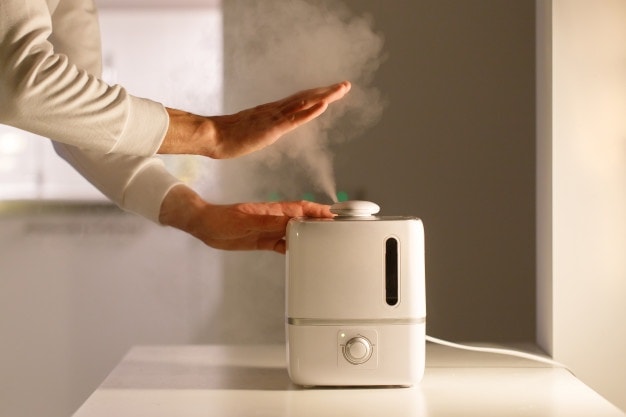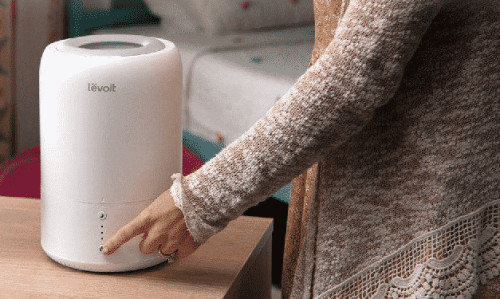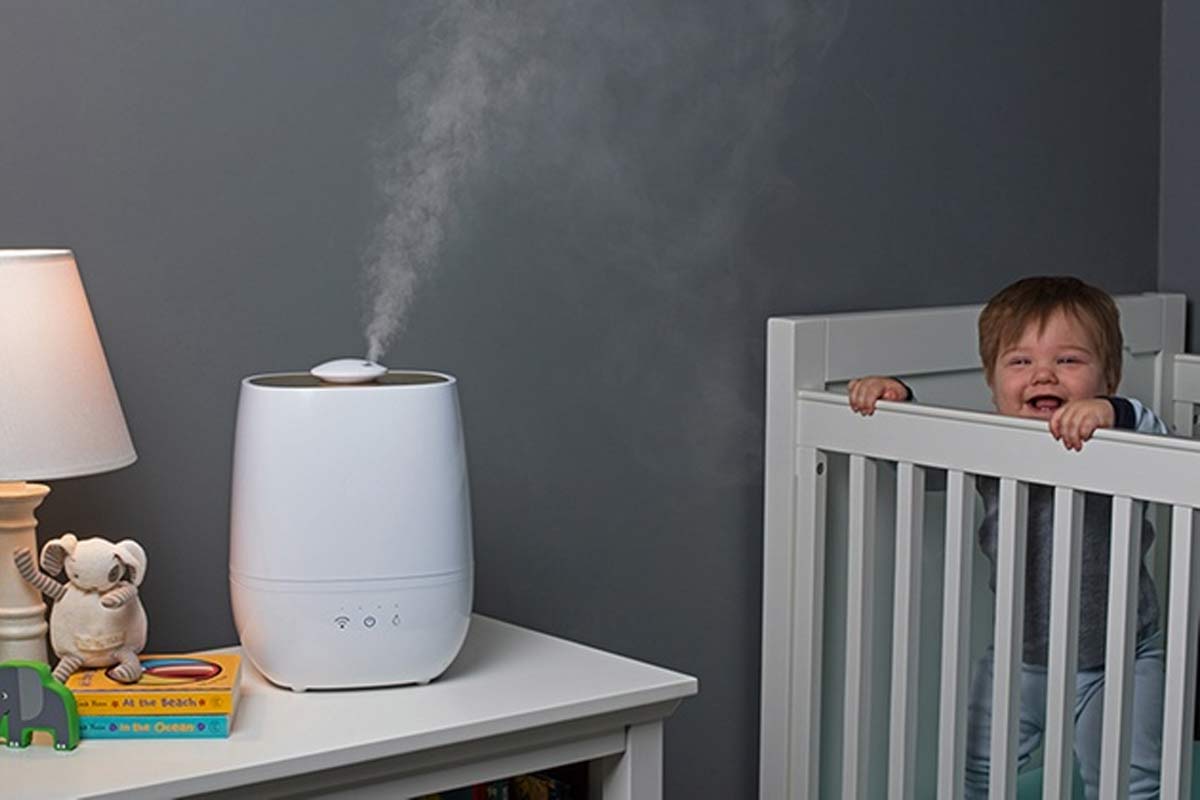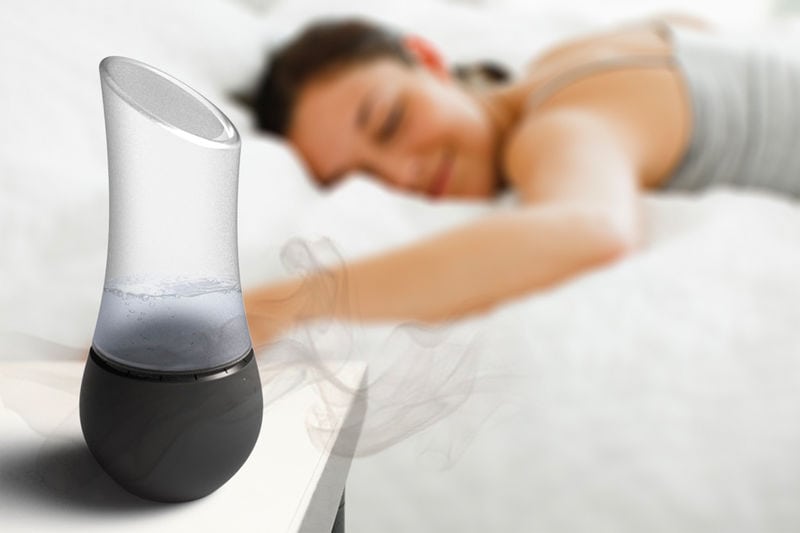Some countries have regions that suffer from intense dryness, causing health issues related to the skin, nose, mouth, and lungs.
Humidifiers assist with these problems, introducing moisture into the air to ease these conditions and provide comfort.
However, you can also create further respiratory issues if you put them in the wrong location. Here’s a quick guide on where to place a humidifier in your home.

Where to Put a Humidifier in the House?
It’s challenging to decide where to place a humidifier if you have several rooms in your house. We’ll provide you with a few factors to look at that will make it easier for you to choose, as it won’t be the same in every home.
Coverage
The most significant factor is area coverage. If you want the humidifier to add air moisture to several rooms, buy a unit with enough capacity for the sq. ft. of the defined spaces. Even if it’s for a single room, ensure that the cubic feet per meter (CFM) is strong enough to circulate in the entire area. Find the room with the least humidity and place the humidifier as close to the center as possible.
Height Above Floor
The floor-to-ceiling height is also essential, as the humidifier will have a better chance at success if it’s off the floor. There’s better circulation, and the added moisture won’t struggle to cover the room. Portable humidifiers should be at least 2 feet tall, while you can place other small units on a table.
Airflow
While the humidifier is doing its best to add moisture to the air, you need to ensure that there’s an as little blockage as possible. Don’t place it near other objects, as it will obstruct the ventilation, making its attempts futile.
Best Place For a Whole House Humidifier

Also known as central humidifiers, these units provide air moisture throughout the house. You can attach them to an air-conditioning unit’s ducts while fixing them to a furnace is also an option. However, there are a few aspects you need to consider to ensure the best performance.
While coverage, height above the floor, and airflow are also vital elements, you’ll want to keep it away from electrical sockets or vents.
You might short circuit your power supply if the moisture reaches the plugs while it can cause rust on the vent’s metal surface.
The humidifier might end up leaking, so ensure there’s nothing nearby that you’d want to protect from water damage.
Where to Place a Humidifier in a Baby Room?
Dry air in a home can lead to dry skin, causing problems such as itchiness or eczema. While we’re all vulnerable to these conditions, a baby’s body is more sensitive to humidity. You can buy special humidifiers that cater to your precious infant or toddler.
You must find a central location close to the driest spot in the room. However, don’t place it on a nightstand near the crib, as your baby’s movement may knock the humidifier to the ground. You should also leave the nursery door slightly ajar so that the air moisture doesn’t accumulate.
How Close Should a Humidifier Be to a Baby?
You should place the humidifier and cord far enough from the crib that the baby can’t reach them. You don’t want the moisture landing directly on your infant. Therefore, aim for a dresser on the opposite side of the room if possible.
Finally, ensure that you use a cool-mist rather than a warm-mist humidifier. The warm moisture may cause problems with the baby’s breathing, which is the last thing you’ll want. Also, buy a humidifier that’s silent and doesn’t disturb your infant’s sleep.

Where to Place a Humidifier in the Bedroom?
People usually prefer placing the humidifier in the bedroom, as that is where they spend most of the time either sleeping, reading, or watching late-night television. A common problem with waking up after a long sleep in dry conditions is skin irritation, dry coughs, or an aching sinus. Humidifiers provide gentle moisture into the air so that you can have both a peaceful night’s sleep and a pleasant awakening.
You’ll want to keep the unit away from windows or any direct sunlight. It can cause algae to form in the water, while it also has to work harder to introduce moisture into the air. Once again, use a shelf or dresser to keep the humidifier off the floor, as the mist can collect and make it damp.

How Close Should a Humidifier Be to Your Bed?
Ideally, you’ll want the humidifier at least three feet from your bed. You don’t want to directly breathe the moisture while you are sleeping, as this can cause issues with your lungs. Keep it off any nightstands next to your bed and especially off the floor nearby.
Since your bed usually takes up most of your room, finding a central spot can be challenging. Wall shelves are perfect, as are wall units or dressing tables on the opposite side of your room.
Placement in the Bathroom
Having a humidifier in a bathroom may seem like a strange concept. The entire purpose of the device is to increase moisture in the air, which is exactly what a bath or hot shower does. However, there are exceptional cases where you’d still use one.
For instance, you may have a cold or a massive bathroom. Furthermore, you might have a toilet in your bathroom and not use the bathroom just for bathing. If you find you need a humidifier in the room, the best placement is on a shelf or counter in the driest area of the room.
Avoid using it after a shower or bathing to prevent excess moisture which can cause mold or mildew to develop.
Do’s and Don’ts of Humidifier Placement
With humidifier placement, there are a few things you should and shouldn’t do.
Off the Floor or on the Wall
As mentioned already, putting the humidifier higher off the floor will help the device spread the moisture into the air. When the cool air sinks or the hot air rises, the vapor will travel with the natural flow in the right directions. Attaching smaller units on walls where there’s open circulation is also beneficial.
Promote Air Circulation
While the above factor is essential, you also need to ensure that there’s available airflow. Putting a humidifier on a table or shelf won’t work well if there are cupboards or other objects in the way. All that will happen is that the moisture will get trapped and cause dampness.

Away From Faces
Humidifiers can promote health and comfort in the home when placed in the correct locations. Conversely, it can aggravate your lungs and cause illnesses, which is the last thing you want. Ensure that it’s kept at a safe distance from your bed or sofa to prevent any adverse effects.
Dangerous Locations
You also need to protect your humidifier to maintain its lifespan. Here are some locations or situations you should avoid:
Electrical Outlets: The moisture can fall and rest on exposed wires or sockets, which can cause a short circuit.
Direct Sunlight: The water in the machine mixed with sunlight can cause bacteria, which you will then breathe via the vapor that the humidifier produces.
